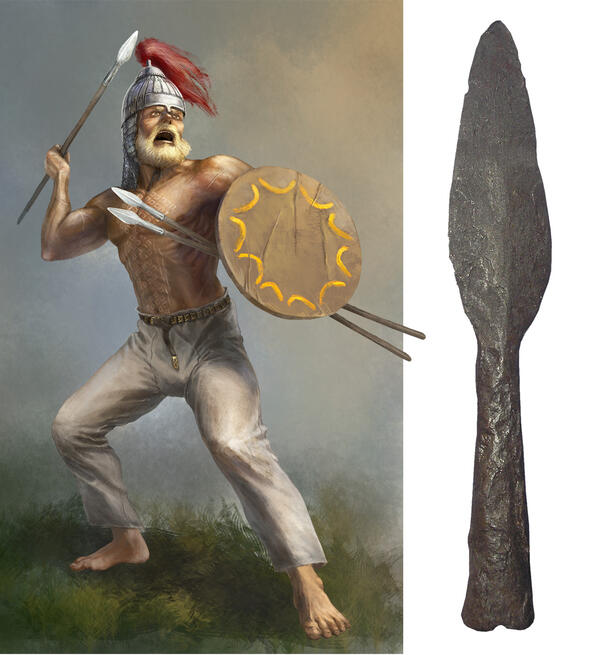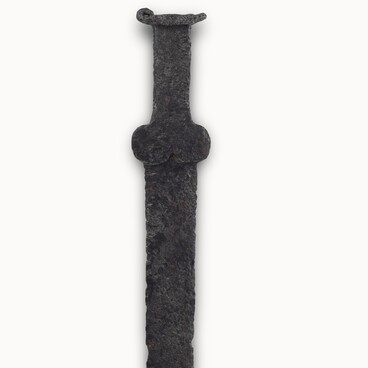The Kursk Regional Museum of Archaeology holds a spearhead, which was discovered by the outstanding archaeologist Yuri Alexandrovich Lipking during the excavations of the Lebyazhinsky burial ground (Kursk region). The exhibit was located in the burials of the Kolochin archaeological culture (6th–7th centuries), the people who ethnically belong to Slavs according to scientists.
The burial was conducted following the rite of incineration, so all that remained of the buried person was a handful of small burnt bone fragments, collected by their relatives from the funeral pyre and placed in a shallow hole. However, a spearhead placed in the burial ground could indicate that the deceased was a warrior. Such spears were small, about one meter long, and were probably used both for throwing and for close combat.
The burial was conducted following the rite of incineration, so all that remained of the buried person was a handful of small burnt bone fragments, collected by their relatives from the funeral pyre and placed in a shallow hole. However, a spearhead placed in the burial ground could indicate that the deceased was a warrior. Such spears were small, about one meter long, and were probably used both for throwing and for close combat.



